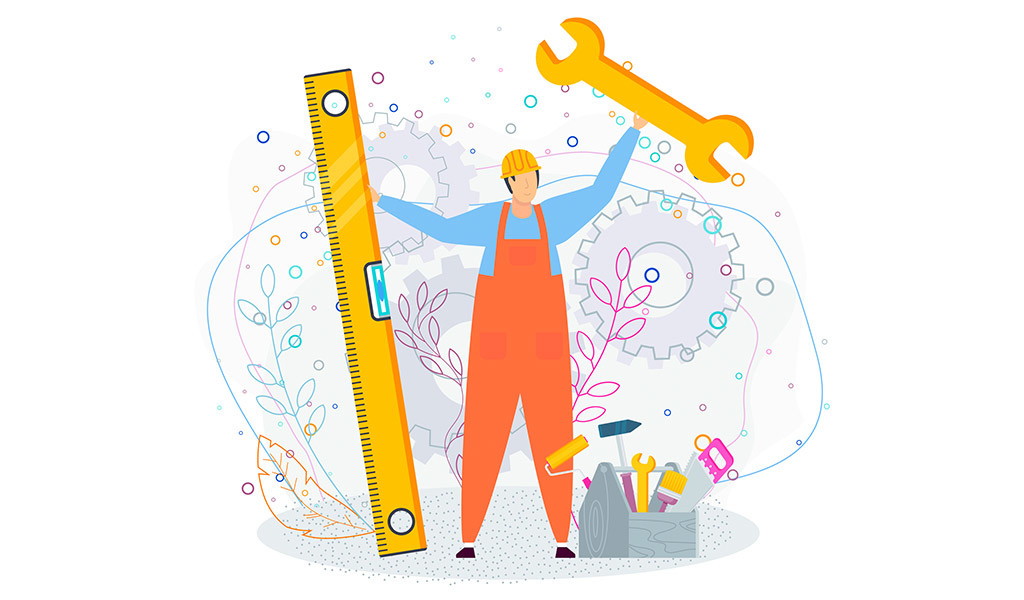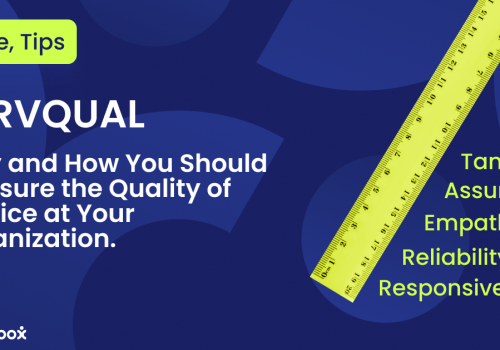Next Level Customer Service Tools. The customer service landscape is rapidly evolving as technology continues to push into new areas. With so many new tools on the market every day, it can be difficult to know which ones you should pick. Even when you see a tool you like, there are likely hundreds of other tools just like it. That’s why in this list we’re going to focus on types of customer service tools available rather than name specific tools. We want to educate our readers on where they can focus their energy if they want to be competitive in 2020. Let’s take a look.
8 Customer Service Tools You Should Be Using
1. Chatbots
Chatbots are proving hugely popular in 2020. Advanced AI is what makes the chatbots of 2020 so successful at meeting customer expectations. Chatbots are ideal for several situations.
Customers who have a simple question or simple problem don’t need to talk to an agent. Let’s say the customer needs to update their address but can’t find where to do it. The chatbot can point them in the right direction or even complete the action themselves. Chatbots can also bring in high quality leads for the sales team. Your agents’ time is valuable and is better spent solving complex problems that cannot yet be handled by a bot. One study found that 51% of agents without AI spend most of their time on mundane tasks, whereas only 34% of agents with AI spend time on mundane tasks.
2. Omnichannel Platform
An omnichannel approach is all about unifying your channels so that the customer has a seamless experience no matter how they engage with your company. Omnichannel is like multi-channel, only better. There are several benefits to having an omnichannel platform.
- With all of your data in one place, you have greater control over your data. This means you can use advanced data analysis tools to delve into the hidden details in your data and find out exactly how to deliver a high-quality customer experience.
- Agents are more productive. There’s no more switching between several systems or being stuck using one channel. Agents can now be on the phone and Live Chat at the same time and in the same software.
- It’s empowering for agents. When agents feel supported by the best tools, they find it easier to do their job. When they don’t have to deal with clunky systems, they can put 100% of their focus on solving customer problems.
3. Mobile App
A free mobile app is a great way to remind customers of your company and lets them know that you’re always available. It’s 2020, and pretty much everyone has a smartphone. In fact, there are now 3.5 billion smartphone users in the world today. When you consider that 4 out of 5 people use their smartphones while shopping online, it’s plain to see that a smartphone app can have a significant effect on pleasing customers.
You can offer customer service communication channels through your mobile app so that users don’t have to search for your website or phone number every time they want to contact you. You can also verify their identity straight from the app to make the experience more convenient for them.
4. Live Chat
73% of consumers think live chat is the most satisfying way of communicating with a business. This is a statistic you can’t afford to ignore in 2020. If you’re not using live chat tools right now, then it’s time to start. There are several benefits to implementing live chat tools. Let’s take a look.
- Reduce costs – Agents can multitask several live chat conversations at once – something that isn’t possible on the phone.
- Increase sales – Research has shown that customers who use live chat are 3 to 5 times more likely to buy than customers who don’t.
- Data – You can save live chat conversations and easily crunch the data to find actionable insights. This is significantly harder with audio data from a phone call.
- Customer satisfaction – Customers prefer to live chat to any other channel. Customers reported much higher satisfaction levels for using live chat over email or phone. 73% of customers who used live chat were satisfied, compared with only 44% for phone.
- Customer convenience – Customers love a convenient option. They don’t like having to jump through hoops to solve their issues, so don’t make them.

5. Online Communities and Brand Engagement
Don’t be a silent agent of your brand. Instead, you should create a strong brand presence by engaging with your customers in online communities. This can be via social media, discussion forums, review sites, and more. The key is to be available and willing to have a conversation with your customers. You don’t have to jump into every conversation but be active. Create a place where your fans can come together and discuss your brand, products, and message. You can weigh in if something needs clarification or just to say thanks for some kind words.
There are tons of apps available where you can monitor your social media mentions, schedule posts, and join in several conversations at once, all from one place.
6. Automatic Callback
Customers hate being put on hold. If they are ringing your customer service line, then they are probably already irate about something. Maybe your product isn’t working how they expected. Maybe it was delivered damaged. Or maybe it wasn’t delivered at all. Whatever the issue is, the customer feels out of control and annoyed. If they ring your customer number and get put on hold, their frustration will continue to rise while they wait. By the time they eventually reach an agent, the situation may have escalated far beyond how they originally felt.
This can feel unfair to the agent, but it’s human nature. When something goes wrong, we feel disadvantaged. We think the situation is unfair and should never have happened in the first place. We think that the company didn’t prioritize us or failed to prevent this from happening. Those feelings can be instantly reversed when the customer gets a swift response from a friendly, knowledgeable, and attentive agent. However, the longer we wait, the more those negative feelings of being abandoned or overlooked intensify.
An automatic callback system can be very effective in combating this issue. This software allows the customer to hang up if they are placed on hold but still keep their place in the queue. The system will simply ring them back when the agent is ready. It means that the customer doesn’t have to wait around with the phone to their ear getting more and more frustrated. They are free to do other tasks that will take their mind away from the issue.
7. SMS Text Support
The more options you have available to your customers, the better. According to one report, 75% of Americans regularly use SMS. While offering internet-based communication is critical in 2020, you should also offer SMS support. Sometimes people run out of data or can’t get onto WiFi. In these situations, they should have another option available.
Customers can rank their preferred communication methods when they sign up for an account with your business. Use these preferences to automate how you deliver communications to these customers.
8. Surveys
There are plenty of survey tools out there to help you create high quality, effective, and polished looking surveys. Surveys are a great way to get to know your customers on a deeper level and get some honest feedback about your business or your product.
You can convert the raw data into helpful graphs or statistics to help inform your next steps. Are most of your customers not satisfied with the mobile version of your website? Do your customers find your chatbot helpful? There are so many questions you can ask to gain valuable insights into your business. Make sure you brainstorm before you make your survey and decide what the purpose of the survey is. You don’t want to overwhelm customers with questions because they may become bored and not complete the survey.

Why It’s Important to Try New Tools
“You’re only as good as the tools you use”. You’re probably familiar with this saying, but it’s true! As the world changes, expectations shift and new ways of doing things are invented. If you stick to using outdated tools that become less relevant over time, you can get left behind while more innovative companies race ahead.
We get it – It’s scary to try too many new things. When you try something for the first time, you have no way of knowing if it will be beneficial. However, we’re living in an age dominated by data science. Someone else has already worked out how successful these tools are by analyzing key data points. After a certain point, it’s not even about taking a risk since the risk can be low, it’s just about trying something new.
You can make your employees better at their job simply by providing them with the right tools. Don’t give your employees a hammer and ask them to screw something in for you. They might be able to do it eventually, but it will take longer and probably look terrible. Instead, give them the latest technology and watch them fly.
When Is the Right Time to Implement New Tools?
Sometimes it’s just not feasible to implement all the tools at once. Budgets have to be contended with, that’s just the reality of business. You should make a list of all of the customer service tools you want to implement, and then create two separate ranks for them. Let’s say there are 10 customer service tools you want to use. Next to each tool, give them a rank from 1 to 10, with 1 being the tool you deem most critical to improving your customer service operation. Do the same again, but this time rank based on how time-consuming the implementation will be.
Once you’ve done this you can create an average score for each tool and decide which tools to implement first. Some tools can have a big impact but take very little time to implement. Chatbots are one of these. It’s now very straightforward and easy to create a chatbot with the bot studio tools available in 2020.
Create a roadmap so you can keep on track with implementing your customer service tools. You should also revisit the list any time you have a new idea that you think could work well for your business. Don’t be afraid to try something new!




















